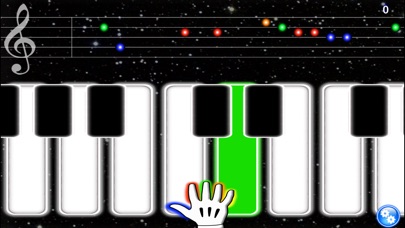

The technical details are as follows Firstly, there are 3 different keys in the song, starting in Bb, changing to A in the middle of the Opera Section and then finishing in Eb. If you are not used to reading chords you may need the Bohemian Rhapsody Sheet Music as you will get to see the timing of the crossovers. You can just play chords for this song, unless you are playing an easy version. Not because it uses difficult chords, the chords for Bohemian Rhapsody are fairly easy for an intermediate pianist – it’s learning all the intricies. I hope you enjoy these Bohemian Rhapsody Chords and best of luck!īohemian Rhapsody is probably one of the most difficult pieces to master. Once you master that you will look the part. One of the trickiest things to learn is the stylish and signature Bohemian Rhapsody hand cross-over which everyone sees Freddie Mercury play on the video. Bohemian Rhapsody is actually not too hard to learn if you have a decent understanding of piano, chords and chord progressions. Watch the Bohemian Rhapsody Piano Tutorial – Part 1īohemian Rhapsody was one of the first songs I transcribed the piano chords by hand back in the mid 1990s. Conducted by Gary English.Bohemian Rhapsody Chords Words and Music by Freddie Mercuryīohemian Rhapsody Chords Transcribed by Shane McDonald Northwestern University Recital Winds at Galvin Recital Hall, Northwestern University.Conducted by Don Linn, DMA Chamber Recital. OctoUniversity of Oklahoma at Pitman Hall, Catlett Music Center, OU campus.MaBay State Wind Ensemble at The Center at Eagle Hill, Hardwick, MA.m.156 Flute last beat B-nat, D-flat, E-flat, E-nat (Db6 not Bb5).m.108 Clarinet 2 first note: A-flat (not A-nat).m.102-3 Oboe: B-flats until the B-natural.m.45 & 155 Clarinet 1, 2nd note is a C#.m.25, alto flute last beat: E-nat, G-flat, A-flat, A-nat.m.67-8 piano D-flat and E-flat 3’s are harmonics, as before.m.50 – alto flute harmonics, tongued – no slur.m.47-50 alto flute dynamics bumped up one level.m.38 horn 1 OUT (measure rest) - this is for balance so you can hear the alto flute better.m.34 horn 1 – eighth note + staccato – no note extender.m.33 Clarinet trills to written B-flat (whole step).m.30 alto flute harmonics – tongued, not slurred.m.18 & 64 piano – “bisbigliando” is spelled incorrectly.m.11 Clarinet trills to written F4 (whole-step).if nec., for balance, you can leave out Horn 2 at reh.The flutist at the premiere was able to swing it with some fancy taping of the solo part so she didn’t have to turn the page as well. m.168, flute solo – leave out beat 1 if necessary during the instrument switch.This significantly helps the balance so you can hear the bassoon solo m.107-113 (letter H) – flip the English Horn and Bassoon 2 parts.(for score & parts to the 4/07 uncorrected editon) The Concertino is dedicated to flutist Sarah Kruser Ambrose, for whom it was written. Practically, the work comes out of the efforts of my friend and colleague Robert Ambrose, a champion of new music who encouraged me to write for chamber winds, and flute in particular, and who shepherded the project with infectious enthusiasm.

In writing the piece, I was particularly excited to explore these styles while juxtaposing the virtuosity of the soloist with the delicate intimacy of the chamber ensemble. In the later movements, the Franco-survey is expanded to other inspirations-to not only the techniques of other French nationals, but also of those I consider “French” in spirit, such as Japanese composer Toru Takemitsu. This Concertino takes the lively French chamber wind literature of the early 20th-century as its starting point, but this piece views the “French” style through an odd lens, twisting and bending the language of that neo-Classical genre in order to run the music through very different stylistic approaches.


 0 kommentar(er)
0 kommentar(er)
